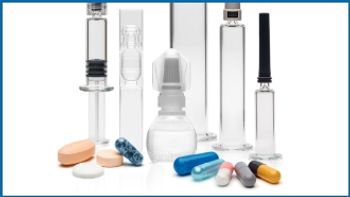
Pharmaceutical Technology Europe
- Pharmaceutical Technology Europe-02-01-2010
- Volume 22
- Issue 2
Trends and challenges of biopharma manufacturing
The whole pharma/biopharma industry is under pressure to deliver cost-effective new drugs; however, the number of new drug applications is getting lower as the size of investment is increasing.
The whole pharma/biopharma industry is under pressure to deliver cost-effective new drugs; however, the number of new drug applications is getting lower as the size of investment is increasing. Unsurprisingly, the majority of new product development is coming from the biopharma sector, the contribution from which has increased tremendously during the last 15 years and is predicted to grow even more so over the next decade.
What’s driving the market?
So, what is driving this trend? Although we biopharma companies want to have new drugs, new products and new profits, and meet shareholders’ expectations, the increase of an ageing population is adding huge pressure to deliver improved healthcare at reduced costs. Demographic shifts are also shaping the industry changes in purchasing power are creating new markets as populations in developing countries want access to medicines. In addition, there are many new peptides, proteins, cells and nucleic acids that hold promise, but have not yet been developed as products because a number of challenges stand in the way of converting these into drugs. We need to create affordable and accessible products via innovation, such as improved pharmacokinetics, predictive biomarkers, ‘personalised’ medicines, biobetters, biosimilars and so on. Certainly these innovations help in our quest to deliver new drugs, but somehow we have to manufacture the protein and we then need to deliver it.
The challenges to production
There is no such thing as a perfect single expression system. However, within reason, companies are looking for a single, reliable host expression and manufacturing platform to produce multiple molecule entities across a biotherapeutics portfolio. Recognising that some of their development drugs will not succeed through that route, many companies want to put a single expression system in place.
Productivity is high on the agenda regarding protein and peptide production. However, it’s not just about grams per litre; it’s about productivity and how to get the most out of the people and ‘stainless steel’ investment. Furthermore, you need a system that can take you from concept the gene to the cell bank and manufacturing as quickly as possible because every day costs a huge amount of money and, importantly, the time lost to market. Do not overlook including the obvious elements in product manufacture, such as making the bioprocess free of animal components, reproducible, robust, easy to scale‑up and so forth.
There are a number of mechanisms available to help create better drugs; for example, active targeting, passive targeting and improving the pharmacokinetics. Increased stabilisation of both the final product and during its manufacture; functionality with increased efficacy; reduced toxicity; and decreased amounts of administration if possible are also important should we forget these, we put ourselves in danger of becoming like Nexavar, a drug that the UK’s NICE refused to approve on the basis of not offering sufficient benefit for its cost. Failure to ensure a drug is not only safe and efficacious, but available at what is deemed an acceptable cost per patient, will almost certainly jeopardise future investment in pharma projects. Technical uncertainty and scale-up uncertainty is one thing, but to also have approval uncertainty could be suicidal. Unless you can develop the drug fast and make it relatively cheap, business will only get tougher when your drug is subsequently refused to the market by the government authorities.
Delivering therapeutic proteins
So, you reach the point where you have produced your biotherapeutic, but it still has to be delivered. Parenteral delivery is not straightforward there are issues including stability, pharmacokinetics and bioavailability. Complex, expensive and commercially killing manufacturing processes often challenge the development of protein therapeutics as well.
From a patient point of view he/she probably has to have relatively high and frequent dosing, and this puts pressure on the industry to get more grams per litre per day of better product. Companies that fail to deliver these types of treatment regimes in a more amenable way are going to struggle in the pharma market.
Innovation with albumin
What is innovative about the use of albumin? Albumin can be innovative despite it being a natural, common protein and well characterised. It has many qualities that can be taken advantage of it is benign and has no reactivity of its own; it’s a scaffold protein; it’s a carrier protein; and it’s in our blood typically for approximately 20 days. Clearly, albumin has a lot of potential as a protein drug delivery vehicle.
Our albufuse technology, which provides molecular fusion of albumin to protein drug candidates for improved half-life and bioavailability is a biological, simple alternative to other technologies, such as chemical conjugation (e.g., PEGylation). An albufuse molecule is expressed as one hybrid, defined by its genetic fusion of albumin to the ‘active’ peptide or protein; for example albumin‑interferon (HGS’ Zalbin). Key benefits of this technology for developers include shorter development times, superior drug candidates, enhanced stability (during both manufacture and final formulation) and new intellectual property opportunities regarding the development of novel molecules. Manufacturers can benefit, for example, by having no post-production or conjugation steps, and having available specific matrices with which to provide a generic yet optimal downstream purification.
As developers or manufacturers, it is very easy to forget about the patient. Ultimately, your product must be about people it must be affordable, it must be accessible, it must be functional and patients must be able to tolerate it. If your product is not efficacious and affordable, it will not be needed or wanted and you will have no business.
Articles in this issue
almost 16 years ago
EU pricing dilemmasalmost 16 years ago
Is change good for you?almost 16 years ago
Newsalmost 16 years ago
Multivariate data analysis easily retrieves insight from a wealth of dataalmost 16 years ago
Rise of the robotsalmost 16 years ago
Your predictions for 2010almost 16 years ago
Commercialising cellular therapies fasteralmost 16 years ago
Cushioning pharma's fall from the patent precipicealmost 16 years ago
Biopharmaceuticals: saving the future of our industryNewsletter
Get the essential updates shaping the future of pharma manufacturing and compliance—subscribe today to Pharmaceutical Technology and never miss a breakthrough.





